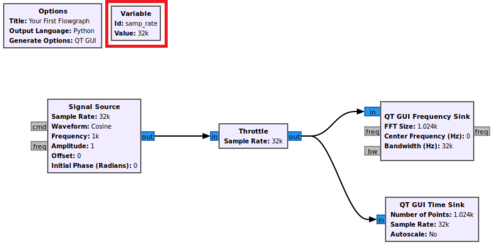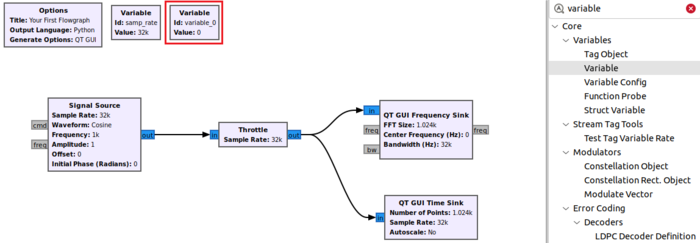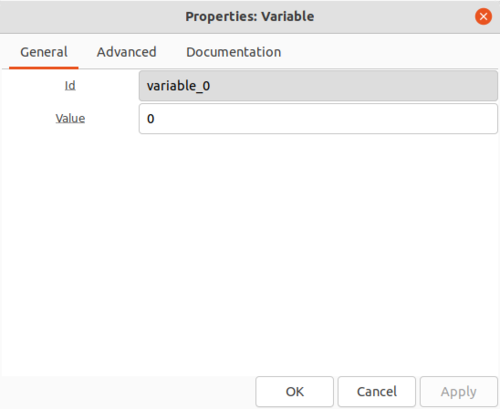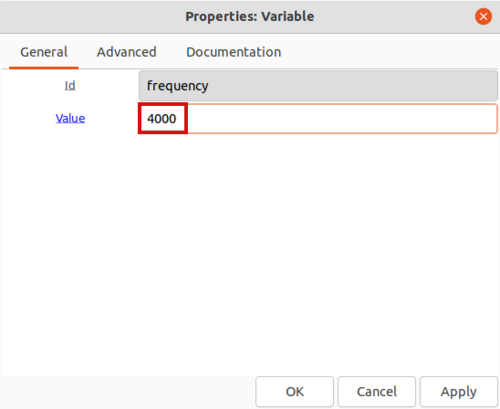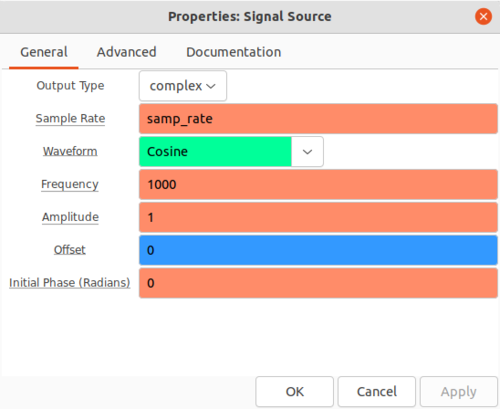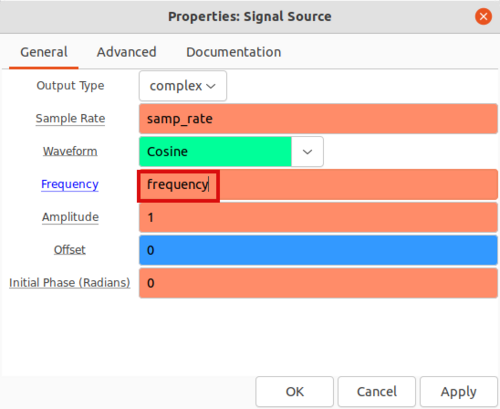Variables in Flowgraphs: Difference between revisions
Mattcarrick (talk | contribs) No edit summary |
Mattcarrick (talk | contribs) No edit summary |
||
| Line 2: | Line 2: | ||
This page describes the fundamentals of a flowgraph: how to make and edit variables, and data types. The flowgraph from the previous guide ([[Your_First_Flowgraph|Your First Flowgraph]]) will be used as a reference. | This page describes the fundamentals of a flowgraph: how to make and edit variables, and data types. The flowgraph from the previous guide ([[Your_First_Flowgraph|Your First Flowgraph]]) will be used as a reference. | ||
=='''Variables'''== | =='''Basic Variables'''== | ||
A GNURadio flowgraph is a ''.py'' Python file. Just as Python code can have variables so too can a GNURadio flowgraph by using the ''Variable'' block. | A GNURadio flowgraph is a ''.py'' Python file. Just as Python code can have variables so too can a GNURadio flowgraph by using the ''Variable'' block. | ||
| Line 27: | Line 27: | ||
Click ''OK'' to save. | Click ''OK'' to save. | ||
Double-click the ''Signal Source'' block to : | Double-click the ''Signal Source'' block to modify its parameters: | ||
[[File:SignalSourceProperties.png|500px]] | [[File:SignalSourceProperties.png|500px]] | ||
You'll notice that ''samp_rate'' is the variable being used for the Sample Rate but Frequency is hard coded to 1000. Enter ''frequency'' into the Frequency field: | |||
[[File:SignalSourceFrequency.png|500px]] | |||
Click ''OK'' to save and re-run the flowgraph. | |||
=='''Dependent Variables'''== | |||
Variables can be dependent on one another in the same way variables in Python can be derived from other variables. | |||
TODO: | TODO: | ||
Revision as of 18:45, 3 January 2022
This page describes the fundamentals of a flowgraph: how to make and edit variables, and data types. The flowgraph from the previous guide (Your First Flowgraph) will be used as a reference.
Basic Variables
A GNURadio flowgraph is a .py Python file. Just as Python code can have variables so too can a GNURadio flowgraph by using the Variable block.
Every new flowgraph starts with the samp_rate variable:
GNURadio blocks are implemented as functions and can take parameters which modify their behavior. All of the blocks in the flowgraph above use samp_rate as a parameter. Create a new variable block by dragging and dropping it from the block library on the right:
Double-click the variable_0 block to view and modify it's parameters.
The Id field is the name of the variable. The variable is going to represent the frequency of the Signal Source block, so edit the name to frequency. Now edit the value to 4000.
Click OK to save.
Double-click the Signal Source block to modify its parameters:
You'll notice that samp_rate is the variable being used for the Sample Rate but Frequency is hard coded to 1000. Enter frequency into the Frequency field:
Click OK to save and re-run the flowgraph.
Dependent Variables
Variables can be dependent on one another in the same way variables in Python can be derived from other variables.
TODO:
make/edit variables
complex vs float (blue vs orange)
compare the python .py code with the visual GRC flowgraph
